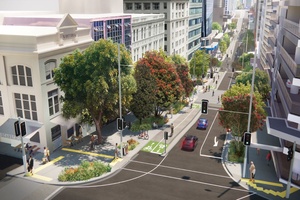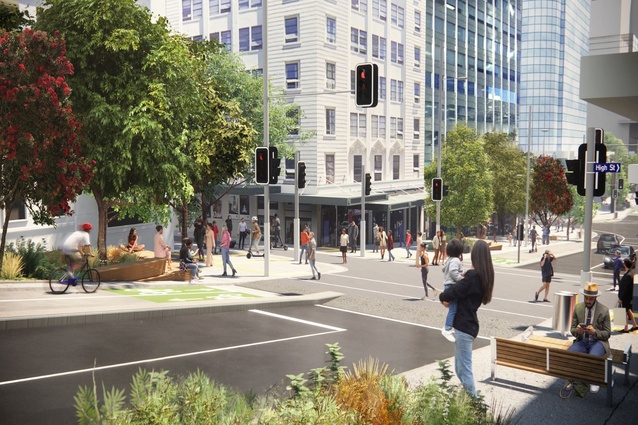Start date for Auckland midtown system approaches
Start dates for the construction of the new Wellesley / Victoria Street mixed-use transport system are drawing closer. This is a pivotal part of the city centre’s midtown regeneration programme, transforming what was once a dense traffic route into a more pedestrian and active transport focused area.
Currently, in the midst of complex integrated works, complete with construction machinery, tunnel boring machines, hard hats and road cones, the plan is to achieve a form of urban symbiosis for these two historic east-west streets, with both acting as portals into and out of Te Waihorotiu Station (Aotea).
In 2021, Auckland Transport (AT) buses were moved from Victoria Street across to Wellesley Street. That helped cement the future of Wellesley Street as midtown’s dedicated east-west bus corridor between Albert and Queen Streets. It also enabled a pedestrian-prioritised Victoria Street — Te Hā Noa — to proceed.
Victoria Street is set to become a tree-lined, pedestrian-prioritised street with the delivery of Te Hā Noa. The design of the street will provide one lane of vehicles in each direction, connected laneways, wide footpaths with places to sit and spend time, street furniture, public art and a protected cycleway.
Construction will start on the midtown part of Te Hā Noa in Victoria Street in early 2023. Stage One of the Wellesley Street Bus Improvements project, turning the section between Albert and Queen Street into a bus corridor first, will begin in late 2023.
When Te Waihorotiu Station (Aotea), Wellesley Street bus corridor and Te Hā Noa are operational, the City Centre Masterplan vision will start to take shape, creating a more welcoming, greener and vibrant city centre, with people-friendly streets and a well-connected public transport system.
There are three dynamic elements to forming this multi-use mobility hub:

1. Te Hā Noa
The midtown section of Te Hā Noa in Victoria Street — from Albert Street to Kitchener Street — will become a high quality accessible public space to support the number of people arriving at Victoria Street from Te Wai Horotiu Station (Aotea), through the northern portal, when the station opens.
The name Te Hā Noa, gifted by mana whenua, evokes a sense of freedom to breathe and enjoy the experience of the sights and sounds around you. In time, Te Hā Noa will form a green link across the city, linking two city parks – Rangipuke / Albert Park and Waikōkota / Victoria Park.
The section of Victoria Street from Albert to Queen Street will see shovels in the ground in early 2023. When that section opens, construction of the second section — from Queen to Kitchener Street — will begin, following a similar delivery sequence as the first section.
More than 20 native trees will be planted along these sections of Te Hā Noa, adding to the city centre’s expanding urban ngāhere (forest), providing shade and shelter, cooling the city and soaking up carbon.
2. Wellesley Street construction
Led by AT, work on Stage One of the Wellesley Street Bus Improvements project between Albert and Queen Street will begin in late 2023, delivering wider footpaths on both sides of the street, six westbound and six eastbound bus stops and a wider and improved crossing between Bledisloe Lane and Elliott Street.
The seamless links between bus and train in the street are expected to drive uptake of public transport, supporting the 64 per cent cut in transport emissions planned for by 2030 and voted for by councillors in August 2022. AT’s plan to move all buses to zero emissions by 2040 adds further weight to the prospect of a zero-emissions public transport future in Auckland’s city centre.
3. Te Waihorotiu Station (Aotea)
The City Rail Link (CRL) is one of the largest infrastructure projects undertaken in New Zealand in recent times. The 3.45km double-track underground rail line will transform Auckland’s public transport services when it becomes operational.
The works below ground are equally crucial in preparing this area for the significant growth ahead. Watercare is leading the work to future-proof infrastructure underground, improving midtown’s wastewater capacity and supporting new builds in the area. Construction is scheduled to begin in mid-late 2023.












